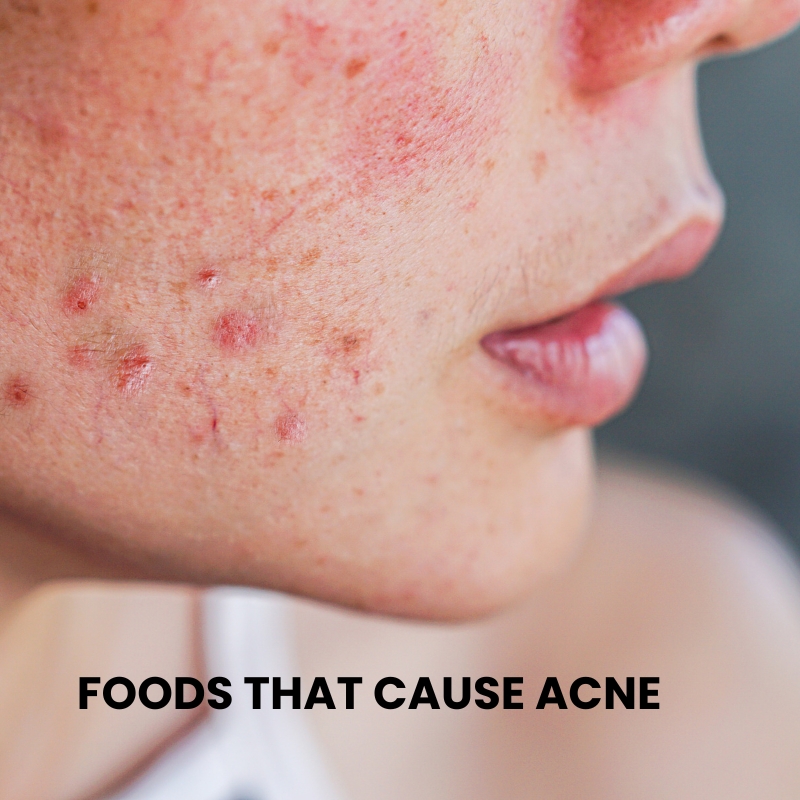Table Of Content
How To Fade Deep-Pitted Acne Scars?
Are you having persistent breakouts? Do you notice that acne scars that are deep indent your skin and simply refuse to fade? Well, do not lose hope just yet. Fortunately, thanks to revolutionary innovations in dermatology, advanced treatment options are now available that can help to reduce severe scarring and restore smoother-looking skin. Read on to know the best treatment options to remove or minimise the appearance of deep scars visibly!
Table Of Content

What Are Deep-Pitted Acne Scars?
Deep pitted acne scars, also known as atrophic scars, are usually the result of severe acne. They generally appear due to the loss of tissue during cell regeneration that eventually leaves behind a skin that has a pitted appearance. They look sunken and depressed with indentations or holes compared to the surrounding skin and are usually challenging to treat. Since they adversely affect the skin texture, they become a significant aesthetic concern for people who have acne-prone skin. If you have severe acne here are some signs and symptoms of deep-pitted scars you may observe.
Must Read: Advanced Acne Scar Treatment
How To Identify Deep Scars?
Here are the common characteristics of deep scars:
- Tissue Depth Or Depression: Flat, thin scars have an indentation that extends vertically to the deep dermis layer of skin or subcutaneous tissue.
- Loss Of Tissue/Skin Volume: These round to oval depressions have sharply demarcated edges and a width of 1.5 to 4 mm. Fibrotic indentations result in shadowing and a pitted appearance.
- Discolouration Of Skin: Acne may result in post-inflammatory hyperpigmentation. Some acne scars may vary in colour from pink, tan, skin-coloured to dark brown.
- Undulating Appearance: Often, these scars have a horizontal orientation with sharp margins or depressed tracks. Skin appears uneven due to the loss of critical rebuilding tissue without collagen.
Must Read: How To Get Rid Of Acne Scar On Your Face?
Do Pitted Scars Go Away?
No, most deep-pitted scars do not go away on their own or heal with time. However, many advanced procedures are now available to minimise them safely and effectively. Please read the next section to know more about them.
Professional Removal Treatments For Deep-Pitted Scars
Here are some popular professional solutions available at various skin clinics for treating deep-pitted scars.
- Laser Skin Resurfacing: Top dermatologists use fractionated erbium YAG laser, a USFDA-approved laser technology to create micro-injuries and treat deep-pitted scars by stimulating new collagen production. They target the scarred tissue by focusing a laser beam of precise wavelength with a handheld device. This non-invasive treatment is quick and painless with topical anaesthesia. It requires about six to eight sessions or as recommended by your dermatologist to rejuvenate the appearance and texture of your skin dramatically and make deep scars less noticeable.
- Chemical Peels: This advanced aesthetic procedure helps in the controlled exfoliation of the top layers to reduce scarring and reveal clear skin from underneath. Chemical peels use plant-based extracts along with AHAs and BHAs to effectively remove dead cells and encourage collagen production around deep scars, giving smoother skin and more even appearance. Dermatologists decide and administer the concentration of peels depending on the severity of scarring. Doctors generally recommend them only for treating superficial scars. However, nowadays, they may suggest them as a combination treatment for deep-pitted scars along with other modalities.
- MNRF: Micro-needling Radiofrequency or MNRF is a revolutionary dermatological procedure that uses radiofrequency energy to tighten the skin and make depressed scars less noticeable. The process stimulates both collagen and elastin production to remodel the skin. The heat energy generated during the treatment stimulates the cells in the connective tissues beneath the scarred surface and enables deep scar revision. The procedure gives impressive results with minimal or no side-effects. There is also almost nil downtime associated with this modality.
- Fillers: Your dermatologist may recommend fillers to treat deep-pitted scars. These fillers fill the scarred tissues and lift them to the level of the surrounding skin. They contain substances such as hyaluronic acid to add volume to the depressed scars with minimal discomfort. Hyaluronic acid fillers are USFDA-approved for safety but offer temporary results that last for nine months to two years. Subsequently, the body enzymes may gradually digest them. The filler treatment has no downtime and provides quick results.
- Surgical Removal: It is an invasive approach to remove severe scars. The surgical procedure helps in resurfacing scarred tissue and makes them less noticeable. After the scar excision, the doctors suture the skin, which may leave a smaller and less prominent scar than the original one. This is also called punch excision. The new scar is likely to fade over time, giving a smoother-looking appearance.
- Microdermabrasion: This treatment is a less intensive form of exfoliation which removes dead cells from the outermost skin layer and reduces small scars. Dermatologists spray ultra-fine crystals through a tube to scrub the skin and use vacuum suction to remove them instantly during the procedure. It requires multiple sessions to show visible improvement in skin texture.
- Dermaroller: Dermatologists recommend this treatment for minimising deep scars by encouraging your skin to produce more collagen. Your doctor may use a handheld, sterile needle-studded roller to puncture the scarred tissue gently. As the skin heals, it naturally produces more collagen and fills up the indentations. Most individuals notice results after nine months to a year though it may require repeated sessions as recommended by your skin specialist.
Must Read: What Is The Cost Of Laser Scar Removal?
Do Scar Removal Creams Help To Heal Deep-Pitted Scars?
Many OTC scar removal creams are available without a prescription, but they fail to reduce the appearance of deep pitted scars. Since scars are a result of tissue damage, topical ointments and gels cannot heal them or reduce any discomfort associated with them.
What Results Can You Expect?
The advanced treatments performed by dermatologists help in reducing the depth, size and visibility of scars. They help in improving the texture of the scarred tissue and giving you blemish-free skin.
However, the results may vary depending on the severity of the scars, skin type, the modality of treatment selected, the technology available and the expertise of the dermatologist performing the procedure.
Now you know all about treatments for deep-pitted scars. Go ahead and consult an experienced dermatologist at your nearest Oliva Skin & Hair Clinic to find out a suitable procedure for you and make an informed decision.
Frequently Asked Questions
Depressed facial scars may be painful in the beginning. Once scars form, they are no longer painful, but hey may become firm in consistency and impart a tight sensation in the skin.
Most of the treatment modalities offer a permanent reduction of deep-pitted scars provided you follow the doctor’s post-care advice and prevent further scarring. However, the results may vary from individual to individual and may also depend on the natural ability of the skin to recover over time.
The cost of treatment for the removal of depressed scars is subjective and varies based on the severity of the concern, the size of the target area, the modality selected, the technology used, the number of sessions and the experience of the dermatologist. The reputation and location of the clinic are other factors that influence the pricing.
You can start seeing visible improvement as the sessions progress. However, you need to complete the treatment to achieve the best results. Most dermatologists recommend about six to eight sessions to achieve optimal results.
Advanced treatments are safe when performed by expert dermatologists using USFDA-approved equipment after proper assessment, customisation of the treatment road map, detailed pre-procedure preparation and adequate post-care.
History
Current Version
July 10, 2024
Written By
Dr. Debatri DattaEdited By
Dr. Debatri DattaMedically Reviewed By
Dr. Debatri DattaDecember 19, 2023
Written By
Dr. Debatri DattaEdited By
Dr. Debatri DattaMedically Reviewed By
Dr. Debatri DattaJuly 3, 2023
Written By
Dr. Debatri DattaEdited By
Dr. Debatri DattaMedically Reviewed By
Dr. Debatri DattaRead This Next

PRP Hair Treatment In Greater Kailash: Cost, Procedure & Results

Ginger for Weight Loss: Nutritional Profile, Benefits & Best Ways to Use It

Oliva’s Commitment To Fight Against Covid-19! Heal the World!

Foods That Cause Pimples: Know What Foods To Avoid For Acne

How To Get Rid Of Whiteheads On Nose?



